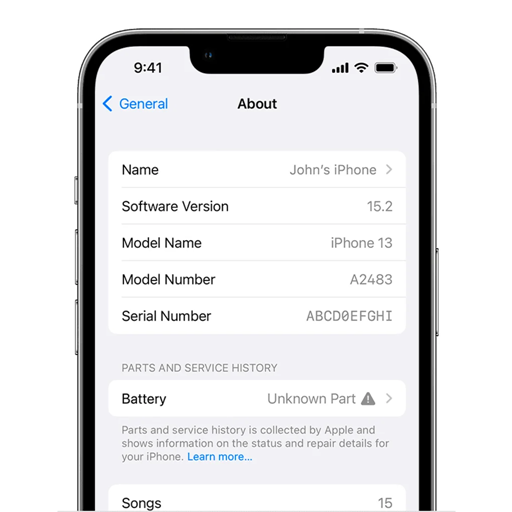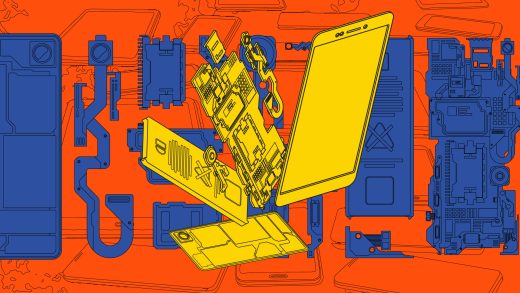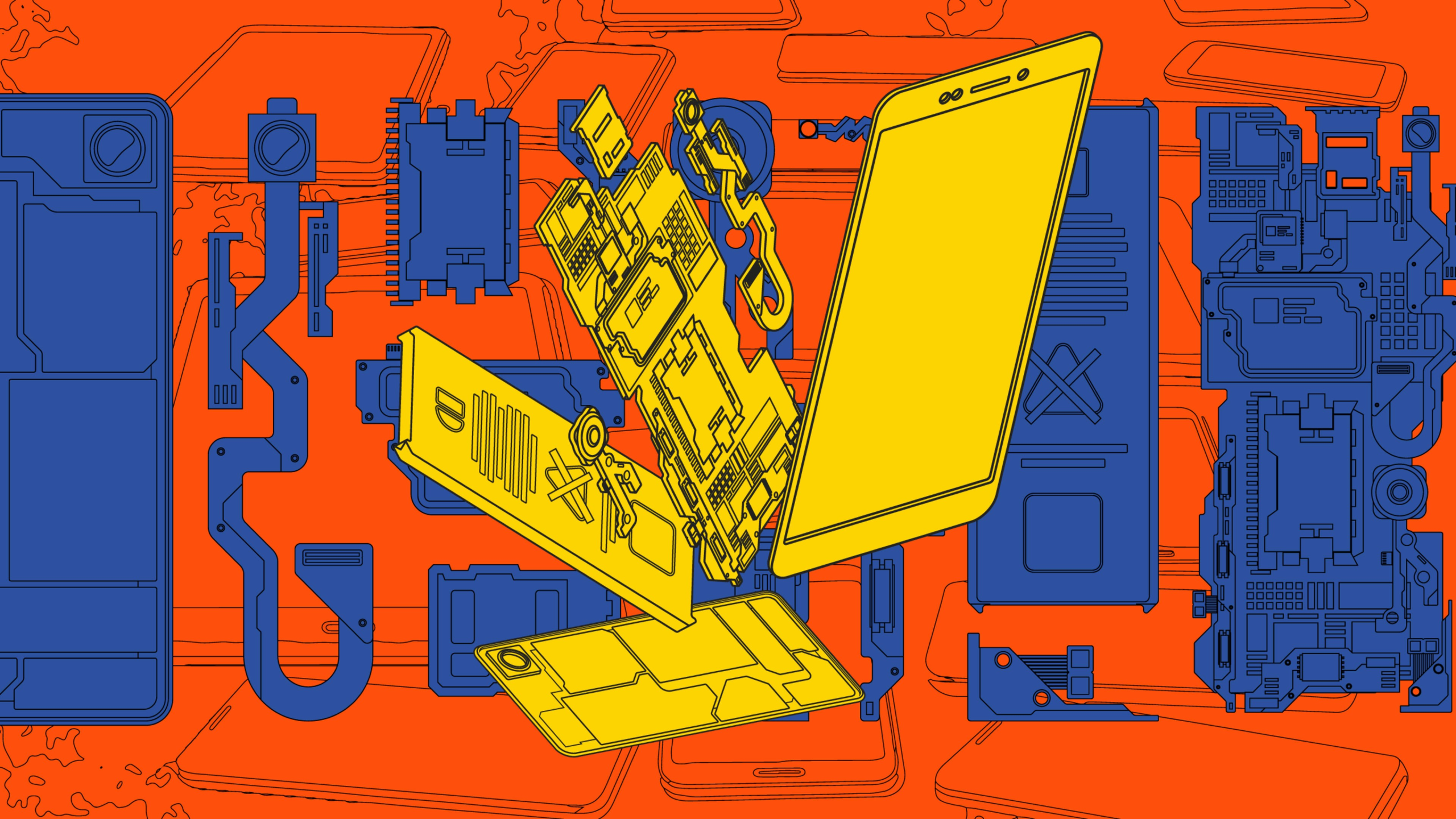How Oregon’s new right-to-repair law forced Apple to change
How Oregon’s new right-to-repair law forced Apple to change
Oregon’s new law is designed to make electronics easier and cheaper to fix. Apple fought the policy, but it’s already starting to do things differently.
If the screen breaks on your iPhone and you try to replace it with an identical used screen, you’ll see an error message: “Unable to determine if your iPhone display is a genuine Apple part.” Face ID and touch ID might no longer work. The front-facing camera and auto-brightness might also stop working.
It’s one example of a manufacturer controlling the repair process. Apple uses software to identify parts of the phone, and it will only work correctly if you buy a new screen from Apple.
And it’s not just Apple. Your washing machine or car might require expensive manufacturer software—accessible only by some repair people—to install replacement parts. A range of other consumer electronics, from food processors to TVs to chain saws, also use software to identify parts and restrict repair. That means that you end up paying more to fix products. Depending on the product, the repair may be so expensive that you end up just buying a brand-new phone or toaster, and the pile of electronic waste grows.
Oregon’s groundbreaking new right-to-repair law
But a recently passed right-to-repair law in Oregon is the first to tackle the practice, called “parts pairing.” Other states may soon follow. Oregon’s law will take effect next year. Brands will no longer be able to sell new products that stop working correctly after a repair with a functional replacement part. The new law, and the threat of more laws, is already nudging companies to act. On Thursday, weeks after the law passed, Apple announced that it would begin supporting some used parts for the iPhone 15—at least if those parts were made by Apple. (The Oregon law will require manufacturers like Apple to allow consumers to use any replacement parts, including cheaper parts made by different companies, in products manufactured after next year.)
“We just want to make sure that people can fix these products, and they don’t have to go back to the manufacturer to ask for permission to fix their own stuff,” says Nathan Proctor, senior director for the Campaign for the Right to Repair at U.S. PIRG, a group that worked on the bill with Oregon lawmakers.
A handful of other states already have right to repair laws, though Oregon’s is arguably the strongest. All of the laws say that manufacturers have to offer parts and instructions for making repairs. Oregon went farther by specifically addressing parts pairing.
“I think it was incredibly important, because [parts pairing] was still limiting consumer choice in where they have their products repaired,” says Janeen Sollman, the Oregon state senator who coauthored the bill. “Something that’s driven me from the beginning is giving consumers a choice. If they only feel comfortable taking it to a manufacturer, they can still do that in this bill. If they want to take it to an independent, they should be able to do that.” An independent shop may charge less for labor, she says, and should have the right to put in a less expensive third-party replacement. “It’s about making sure that they have choice with the dollars they spend, and reducing e-waste.”

We now produce 62 million tons of e-waste a year
The problem of e-waste is enormous, and growing. A UN report in March said that a record 62 million metric tons of e-waste—enough to fill more than a million and a half dump trucks—was produced in 2022. That’s 82% more than in 2010, when the numbers were already large. By the end of the decade, it could jump up to 82 million metric tons of waste in a year. Less than a quarter of it was recycled. Billions of dollars of valuable materials were lost.
Making products easier and cheaper to repair can make a meaningful difference. Repair shops have an incentive to compete on the cost of repairs; manufacturers have the opposite incentive to get someone to buy a new device. “It’s absolutely going to move the dial,” says Sollman. “If someone is given the option that it’s $ 400 to fix one issue with your phone that might be two and a half years old, or buy a new phone in 36 easy payments—and then somebody goes, ‘Well, I don’t have $ 400’—they’re kind of forced into that. And then their phone becomes essentially waste.”
The law was difficult to pass; it was the fourth attempt at a repair bill in Oregon. Sollman says Apple fought hard against any mention of parts pairing. “I don’t think Apple were good partners in this work,” she says. “Apple preferred to do behind-the-scenes, private meetings. Their policy was never to give public testimony.” Later, as the bill got closer to passing, they did testify, arguing that the bill would “undermine the security, safety, and privacy of Oregonians by forcing device manufacturers to allow the use of parts of unknown origin in consumer devices.”
But the company’s resistance gave Sollman more resolve. “It created a lot of extra work,” she says. “It also created a little extra fire in me because they fought this so hard.”
The lawmakers had originally considered saying that manufacturers couldn’t force someone to connect to the internet to make a repair. But as they talked to other companies, they understood that parts pairing could be useful in some ways. It can help calibrate a replacement part so it works optimally, for example. Google and others worked closely with lawmakers to help work through the technical details and craft a bill that would work. The lawmakers tweaked the language to focus on the main problems that parts pairing can cause. A product shouldn’t stop working, or have reduced function, just because a part is replaced. Independent repair shops should be able to make any repairs. And products shouldn’t send misleading messages that make it look like there’s something wrong when a replacement part is added.
Companies like Apple are beginning to change
A new bill in Colorado is taking a similar approach. And even with laws only in a limited number of states, manufacturers are adjusting. Apple announced on Thursday that it planned to make “select iPhone models” repairable by this fall with used Apple parts anywhere—not just in Oregon. “I was incredibly happy,” Sollman says. “There was a lot of ‘FUN’—fear, uncertainty, and doubt—with this bill. Part of that was ‘Apple is not going to sell in Oregon.’” Instead, Apple started to change course. “Ultimately, it was a consumer win,” she says. She’s hoping that the bill can be a model for a national law.
The broader push for right to repair over the past several years has also encouraged companies to change, says Proctor. Apple offers spare parts and service manuals. Microsoft offers tools and guides that it coordinates with iFixit, a how-to website focused on repair. Still, some companies are moving more slowly, he says. In New York, where a right-to-repair law is now in effect, some companies still aren’t offering tools and guides. Enforcement from state attorneys general will likely be necessary. Adding new policies could also help. France, for example, requires some electronics manufacturers to get a repairability score and put it on their packaging. Consumers can choose products that will last longer, and manufacturers have more incentive to think about repairability and durability.
“I’m really hoping that manufacturers start to work with us and start to really use their genius to make stuff that lasts a long time and allows people to fix it and keep using it when it breaks,” says Proctor. “But I do think that we need to change the incentives. Because right now it’s obvious that the incentive is, ‘How can we figure out how to make people buy new stuff all the time?’ And manufacturers are really good at solving for that problem. It’s just the wrong problem.”
(19)



